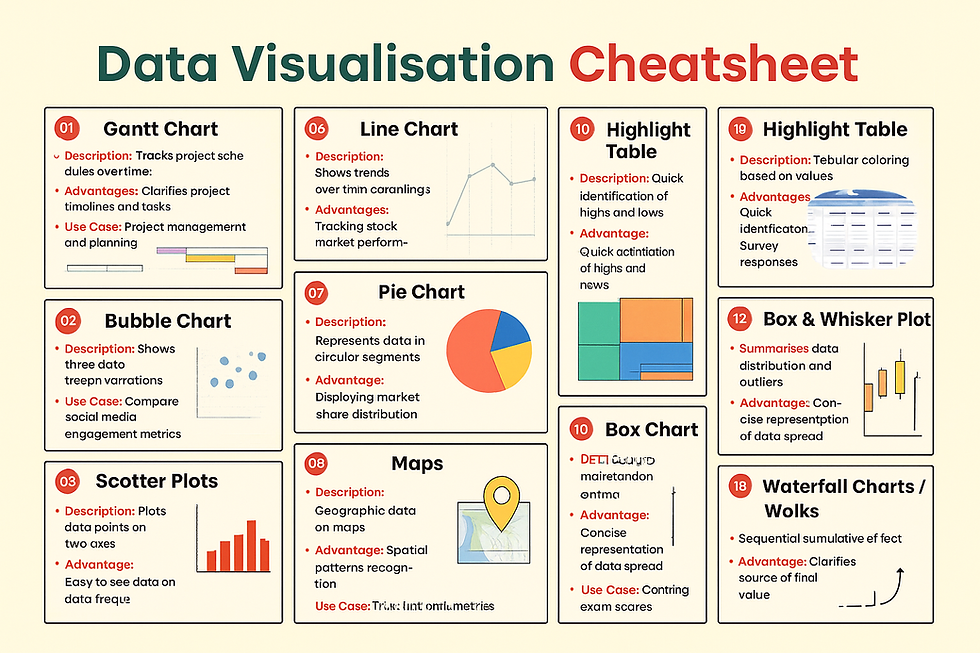Machine Learning: Everything You Should Know
- Debapritam Mishra

- Aug 15
- 4 min read

Introduction
Machine Learning (ML) is one of the most transformative technologies of our time. It’s the science — and art — of teaching computers to learn from data and make intelligent decisions without being explicitly programmed. From predicting traffic on your daily commute to powering recommendation systems on your favorite apps, ML is silently shaping the way we live, work, and interact with technology.
What Exactly is Machine Learning?
Arthur Samuel, one of the pioneers of the field, famously defined machine learning as:
“The field of study that gives computers the ability to learn without being explicitly programmed.”
In simple terms, ML enables machines to analyze data, identify patterns, and make predictions or take actions — improving their performance over time as they’re exposed to more information.
Everyday Example:
When Google Maps predicts traffic delays due to ongoing metro construction, it’s using ML. By analyzing real-time location data, road conditions, and historical patterns, the system makes remarkably accurate predictions.
How Does It Work?
The ML process follows a cycle:
1. Data Collection - Gather training data from various sources.
2. Model Training - Feed the data into algorithms so the system can learn patterns.
3. Testing & Evaluation - Compare predictions with real outcomes.
4. Improvement - Adjust the model to boost accuracy over time.
The quality of the input data directly influences how accurate and effective the system will be.
Types of Machine Learning
1. Supervised Learning
o Uses labeled datasets where both inputs and outputs are known.
o Learns to map inputs to outputs for future predictions.
o Examples: Random Forest, Logistic Regression, Decision Trees.
2. Unsupervised Learning
o Works on unlabeled data to find hidden patterns and groupings.
o Examples: Customer segmentation, fraud detection.
3. Semi-supervised Learning
o Combines small amounts of labeled data with large amounts of unlabeled data.
o Improves accuracy while reducing labeling effort.
Where is ML Used?
· Image Recognition: From tagging friends on social media to diagnosing diseases from scans.
· Speech Recognition: Powering Siri, Alexa, and Google Assistant.
· Self-Driving Cars: Using sensors and algorithms to detect objects and navigate roads safely.
· Sentiment Analysis: Understanding emotions in customer reviews or social media posts.
· Social Media Personalization: Tailoring your feed to your interests.
Why is Machine Learning Important?
· Data-Driven Insights - Extracts valuable patterns from massive datasets.
· Automation & Efficiency - Reduces manual work and minimizes errors.
· Enhanced Security - Detects cyber threats in real time.
· Healthcare Advancements - Improves diagnosis, treatment, and drug discovery.
· Predictive Analysis - Forecasts trends, demand, and risks.
Latest Trends in Machine Learning
1. Low-Code / No-Code ML - Empowering non-programmers to build models.
2. Metaverse Integration - Driving immersive, AI-powered experiences.
3. MLOps - Streamlining ML deployment from development to real-world use.
Recent Developments in Machine Learning
1. Predicting Future Water Availability:
With the rising global population and increasing demand for freshwater, machine learning has become a vital tool for predicting water availability. It enhances accuracy in forecasting the water cycle by employing techniques such as artificial neural networks (ANNs), support vector machines (SVMs), and deep learning models.
Machine learning algorithms analyze various factors, including rainfall amounts, temperature, and soil type, to predict groundwater levels, precipitation, and streamflow. By integrating these factors, machine learning creates a comprehensive understanding of our water resources.
2. Transforming Trauma Care:
Researchers from Osaka University are leveraging machine learning to enhance trauma care by identifying patients who are likely to benefit from a drug that stops excessive bleeding. By analyzing data from 50,000 patients, they have developed a predictive model for the medication tranexamic acid, which helps control bleeding.
Machine Learning Trends
In today’s fast-evolving technological landscape, both Artificial Intelligence (AI) and Machine Learning (ML) are pivotal. Machine Learning simplifies tasks, accelerates processes, and reduces errors, revolutionizing industries such as healthcare and finance through innovation. As we advance into a new era, these technologies continue to expand and reshape various sectors. Here are the latest trends in Machine Learning:
1. Low-Code or No-Code Development
AI and machine learning are revolutionizing industries such as agriculture, finance, marketing, and banking by enhancing efficiency. In 2024, low-code and no-code platforms are advancing, allowing users without coding experience to leverage these technologies. These budget-friendly platforms are increasingly used for tasks like employee hiring, customer sentiment analysis, and demand forecasting. As these platforms continue to evolve, they enable developers to create powerful, user-friendly machine learning applications, improving the overall user experience.
2. Metaverse
The metaverse is rapidly advancing and capturing global attention with its interactive experiences. Businesses are leveraging this virtual realm to engage customers more effectively. As the metaverse evolves, machine learning plays a crucial role in driving its development and expanding its possibilities. With ongoing technological advancements, the metaverse is increasingly becoming an integral part of our daily lives.
3. MLOps
MLOps streamlines the process of building, testing, and deploying machine learning models. By integrating best practices from machine learning, DevOps, and data management, MLOps ensures efficient transitions from model development to real-world applications. It emphasizes automation to speed up and enhance the reliability of machine learning processes.
The global MLOps market, valued at USD 1.4 billion in 2022, is projected to reach USD 37.4 billion by 2032, growing at a CAGR of 39.3% from 2023 to 2032.
The Future of ML
Machine learning is moving at lightning speed, reshaping industries and creating opportunities in ways we couldn’t imagine a decade ago. Whether it’s personalizing education, revolutionizing healthcare, or helping us make smarter business decisions, ML is at the core of the next wave of innovation.
The future is here — and it’s learning.




Comments